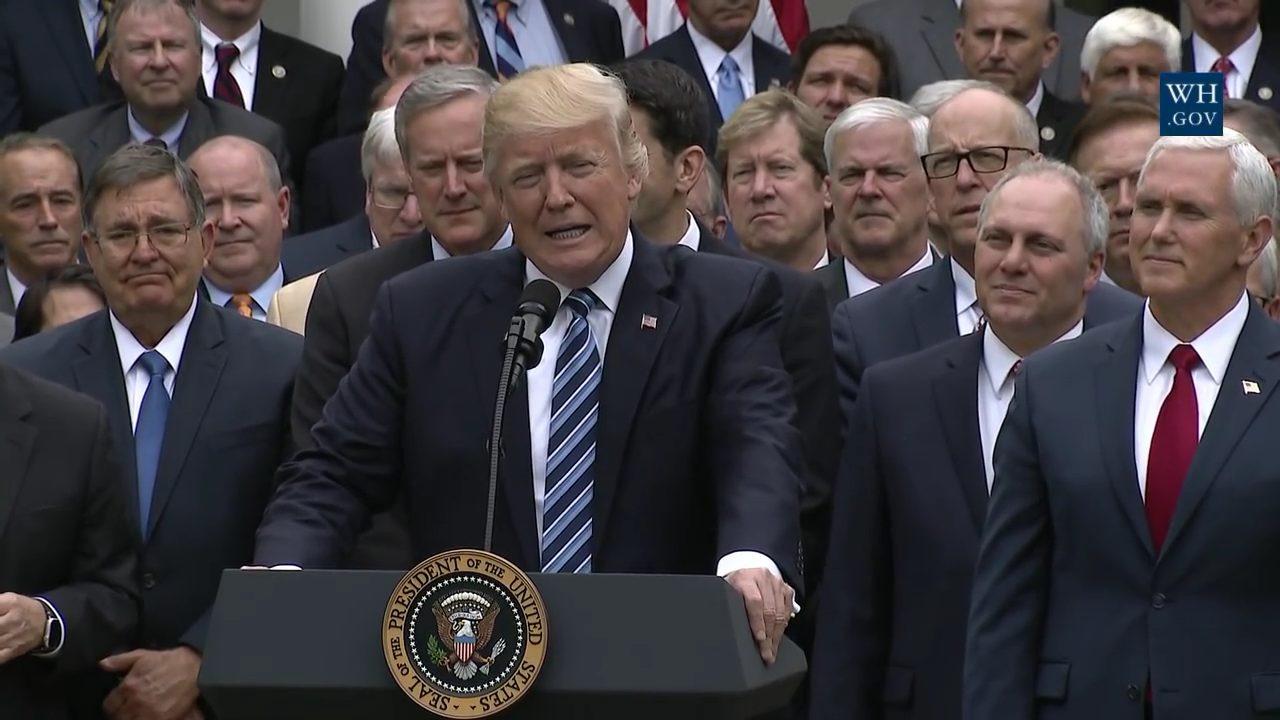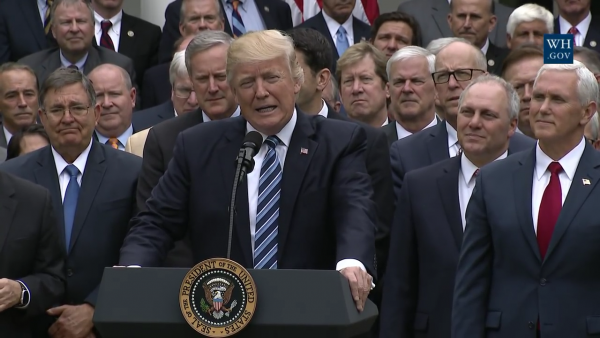Six Reasons the Trump Administration’s Budget Is a Disaster for Women and Families

 This morning, the Trump administration released its budget blueprint for FY2020. As Maya Angelou warned us, “when people show you who they are, believe them.” And this budget shows us exactly who President Trump is and what his priorities are.
This morning, the Trump administration released its budget blueprint for FY2020. As Maya Angelou warned us, “when people show you who they are, believe them.” And this budget shows us exactly who President Trump is and what his priorities are.
This proposed budget underscores that if Trump had his way, he would enact policies that undermine the economic security, health, and safety of women and families at every turn – with low-income women and women of color getting hit the hardest.
None of this should come as a surprise. Every Trump budget has recommended dismantling, cutting, or even eliminating key supports women and families rely on – all to pay for tax cuts for millionaires and corporations. But just because it’s expected does not make it insignificant.
When there is divided government, there is often a temptation to dismiss the president’s budget as “dead on arrival” in Congress. After all, Congress writes the annual spending bills. But this tendency is misguided for two reasons. First, the president has enormous executive power, and the budget is chock full of proposed unilateral actions that would harm women and families – including a rule currently under consideration that would take food away from families struggling to find enough hours at work. Second, the president still has to sign those spending bills, and his request for even more funding for a racist and unpopular border wall on the heels of the longest shutdown in history underscores just how much havoc he is willing to wreak in everyday people’s lives to score ideological points.
Here are 6 ways the president’s budget undermines women and families:
1. It forces low-income women and families to foot the bill for his tax cuts for millionaires and corporations.
The Trump budget doubles down on the deeply unpopular tax law of 2017, which overwhelmingly benefited millionaires and corporations while adding $1.9 trillion to the deficit. Trump proposes making those tax cuts permanent, yet, at the same time, claims to be so concerned about the deficit that his budget slashes Medicaid, nutrition assistance, and other basics that women and families need to thrive. Pay special attention to budget proposals advancing so-called “work requirements,” which are code for cuts that take health care, food, and housing away from people who cannot report enough hours at work. The administration has been enacting these proposals unilaterally, doing an end-run around Congress, which has directly rejected these cuts.
2. It puts people’s health on the line, including by proposing cuts in funding to Medicaid and other health programs that total over a trillion dollars over the next ten years.
The Trump budget continues this Administration’s harmful, unpopular attempts to repeal the Affordable Care Act, regurgitating proposals that have already been rejected and touting its decision to expand the sale of junk insurance plans that discriminate against women. The Trump budget misleadingly says it is modernizing Medicaid, but that is a smokescreen for policies that take health care away from people who cannot meet stringent work reporting requirements and other harmful initiatives that harm the health of women and families who rely on the program. The Affordable Care Act and Medicaid provide critical health insurance coverage to women across the country, improving their health and economic wellbeing. The Administration should be proposing expansions and improvements of these health insurance coverage programs, not ways to further restrict them (as we know, such restrictions can lead to disastrous results).
3. It would squeeze the part of the budget that funds key supports that women and families need to thrive.
The President’s budget would maintain draconian caps to “non-defense discretionary spending,” the part of the budget that funds vital programs like housing assistance, Head Start, home energy assistance, and after-school programs. In addition, Trump’s request for $8.6 billion in border wall funding (along with increased costs for veterans’ health care) would also come out of this part of the budget. These are programs that women and their families depend on to keep a roof over their heads, keep the heat on in the winter, and ensure their kids are in a safe and enriching after-school environment. As a result, broad cuts to discretionary spending would have a disproportionate and detrimental impact on women and families.
4. It fails to make real, sustained investments to adequately address families’ struggles to find and afford high-quality child care.
The Trump budget flat-funds child care at a time when only 1 in 6 children eligible for assistance under federal rules receives it. Flat funding means more children and families will not be served, and it prevents states from continuing their progress to improve quality, institute family friendly policies, support educators, and implement other important reforms required by the 2014 bipartisan reauthorization. While the President’s budget proposes a one-time fund to expand the supply of child care, the proposal would require states to roll back basic protections that states have determined keep children safe to get the funding. Moreover, as noted above, the budget slashes the health care, nutrition, and other services that the families turning to child care assistance need to thrive, undermining any claim this budget could make about investing in children and families.
5. It undermines workplace protections for women—and proposes “paid leave” that ignores the needs of millions of working women and their families.
Even as the MeToo movement has highlighted persistent and pervasive obstacles to women’s workplace equality and opportunity, Trump’s budget proposes steep cuts to the Department of Labor (DOL)—including a 74 percent cut to funding for DOL’s Women’s Bureau—which would hobble this critical agency’s ability to ensure that women can work with equality, safety, and dignity. The budget also cuts training programs that can help women secure better quality and high paying jobs. And the inadequate parental leave proposal excludes many of the people who need paid leave the most—like those caring for seriously ill family members or battling critical health conditions themselves.
6. It makes it harder for students to learn in a safe, supportive environment.
In this budget, President Trump and Betsy DeVos propose to destroy the systems that protect and enforce student rights, so that only students with wealth and privilege have educational opportunity. The budget proposes a school voucher proposal that would steal $5.65 billion from public schools that are required to follow federal civil rights and special education law to give to private schools with a history of openly discriminating against students and forcing parents to waive their children’s educational rights. On top of the voucher program, this budget and includes several proposals that will force students to go further into debt to pursue a degree and certain careers after college, such as restricting the availability of work-study funding, getting rid subsidized loans, and eliminating a loan forgiveness program that makes it easier for graduates to pursue careers in public education, fighting hate, and advocacy on behalf of students or other public interest fields. The budget proposes freezing funding levels for the office within the Department that investigates civil rights complaints at a time when the number of white nationalist groups is on the rise. Overall, the Trump budget proposes to cut the Department of Education’s funding by 12 percent.
Next week, the administration will release the specific numbers behind each of these proposed policies. But this week’s budget outline tells us enough about what the president values. And women’s economic security, health, safety, and dignity are not on that list.










